The Navy pays sailors comparable to other military branches with wages determined by rank and years of service.
Therefore, Navy SEAL salary is based on the same factors with a few opportunities for bonus pay.
How much can you expect to earn each month serving the military as a Navy SEAL?
Read the article to learn more about how Navy SEAL salaries work and the additional benefits of enlistment.
Related Article – Delta Force Vs. Navy SEALs
The U.S. Armed Forces have always been fair and unilateral when it comes to compensation.
All the major branches (Army, Marine Corps, Air Force, etc.) follow the same pay structure.
The U.S. military compensates soldiers based on two primary factors: A) military rank and B) years of service.
The longer you serve, and the higher your Navy rank, the more you can expect to earn each month.
Consequently, your Military Occupational Specialty (MOS) has very little, if anything to do with your monthly wage.
Elite special-ops like Navy SEALs do not earn from a different pay scale than the regular Navy.
The only difference is that SEALs usually receive hazardous duty pay which means higher earnings.
SEALs also get rewarded with two substantial pay bonuses once they A) qualify for Navy SEAL training and B) successfully complete the training program.
Here is a general idea as to what you would earn in the U.S. Navy based on military rank:
| Insignia | Pay Grade | Rank | Abbreviation | 2021 Minimum Monthly Pay |
|---|---|---|---|---|
| N/A | E-1 | Seaman Recruit | SR | $1,785.00 |
| E-2 | Seaman Apprentice | SA | $2,000.70 | |
| E-3 | Seaman | SN | $2,103.90 | |
| E-4 | Petty Officer Third Class | PO3 | $2,330. 40 40 | |
| E-5 | Petty Officer Second Class | PO2 | $2,541.60 | |
| E-6 | Petty Officer First Class | PO1 | $2,774.40 | |
| E-7 | Chief Petty Officer | CPO | $3,207.60 | |
| E-8 | Senior Chief Petty Officer | SCPO | $4,614.60 | |
| E-9 | Master Chief Petty Officer | MCPO | $5,637.00 | |
| E-9 | Command Master Chief Petty Officer | CMDCM | $5,637.00 | |
| E-9 | Master Chief Petty Officer Of The Navy | MCPON | $5,637.00 |
Another table which gives you an idea of how much you would earn as an officer in the U.S. Navy:
| Insignia | Pay Grade | Rank | Abbreviation | 2021 Minimum Monthly Pay |
|---|---|---|---|---|
| O-1 | Ensign | ENS | $3,385. 80
80 | |
| O-2 | Lieutenant Junior Grade | LTJG | $3,901.20 | |
| O-3 | Lieutenant | LT | $4,514.70 | |
| O-4 | Lieutenant Commander | LCDR | $5,135.10 | |
| O-5 | Commander | CDR | $5,951.40 | |
| O-6 | Captain | CAPT | $7,139.10 | |
| O-7 | Rear Admiral Lower Half | RDML | $9,414.30 | |
| O-8 | Rear Admiral | RADM | $11,329.50 | |
| O-9 | Vice Admiral | VADM | $16,012.50 | |
| O-10 | Admiral | ADM | $16,608.30 |
Here are a few examples of what you might earn in the U.S. Navy based on rank and years of service:
NOTE: You can get a more detailed look at what you expect to earn in the Navy based on both military rank AND years of service by reading our Navy Ranks And Basic Pay For 2020 article.
Related Article – Navy Special Warfare Operator (SO): Career Details
While the pay is enough for many people to join the military, there are plenty of service members that also value the excellent benefits included with a monthly salary.
The U.S. Navy has an outstanding benefits package that most people joining the military (particularly those fresh out of high school or college) have never enjoyed before through a job:
Additionally, the U.S. Navy has many added perks or programs you can join that are included as part of your service:
Finally, Navy SEALs receive several added bonuses for being part of an elite special-ops force:
While it may seem like at face value Navy SEALs don’t earn more than regular Navy sailors it is actually not true when you factor in all the bonuses.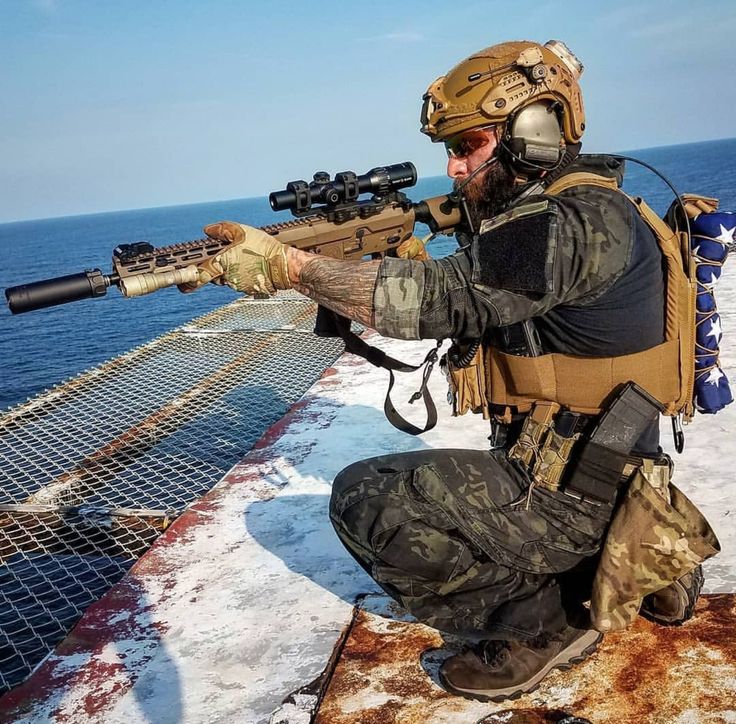
Related Article – DEVGRU: 7 Things You Didn’t Know About SEAL Team 6
Now that you have a good idea regarding the bonuses you are entitled to earn as a Navy SEAL, let’s examine them in more detail:
1. Navy SEAL Qualifying Bonus: The U.S. Navy offers you an initial bonus just for qualifying for SEAL training.
2. Training Completion Bonus: Navy SEAL training is largely considered the most demanding training on earth. If you manage to survive, you get a handsome financial reward.
3. Hazardous Duty Pay: Pay for non-aircrew members is an additional $150 per month for performing dangerous job duties associated with Navy SEALs.
4. Parachute/Demolition Pay: Parachuting and handling demolitions fall under the extra $150 you earn each month for hazardous duty pay.
5. Dive Pay: SEALs that perform work as divers (every special-op is trained in diving) receive an added bonus of up to $240 per month.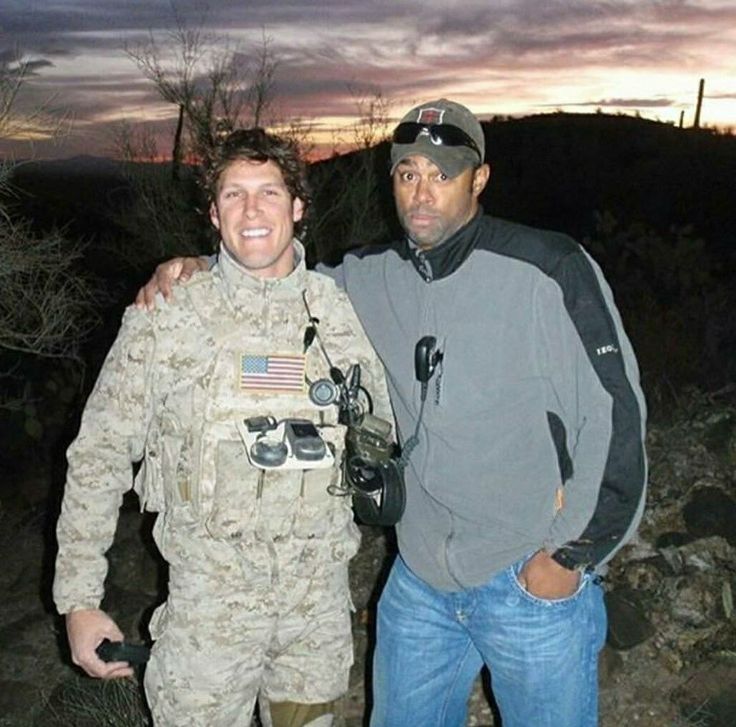
6. Imminent Danger Pay: SEALs earn an additional $225 per month for working outside the country and being linked to imminent danger such as wartime conditions, terrorism, or civil war.
7. Retention Bonus: The U.S. Navy rewards soldiers that return for another tour of service. Your retention bonus varies based on a few factors.
Navy SEAL bonuses can potentially earn you $150 to $615 more a month, which is substantial.
And that doesn’t include initial bonuses for qualifying and passing SEAL training, or retention bonuses.
Here are some commonly asked questions about Navy SEAL salary:
The amount of Navy SEAL salary for a year is determined by A) military rank, B) years of service, and C) any applicable pay bonuses.
Navy SEALs at the lowest possible rank (E-3) receive a little over $2,000 per month (not factoring in bonuses).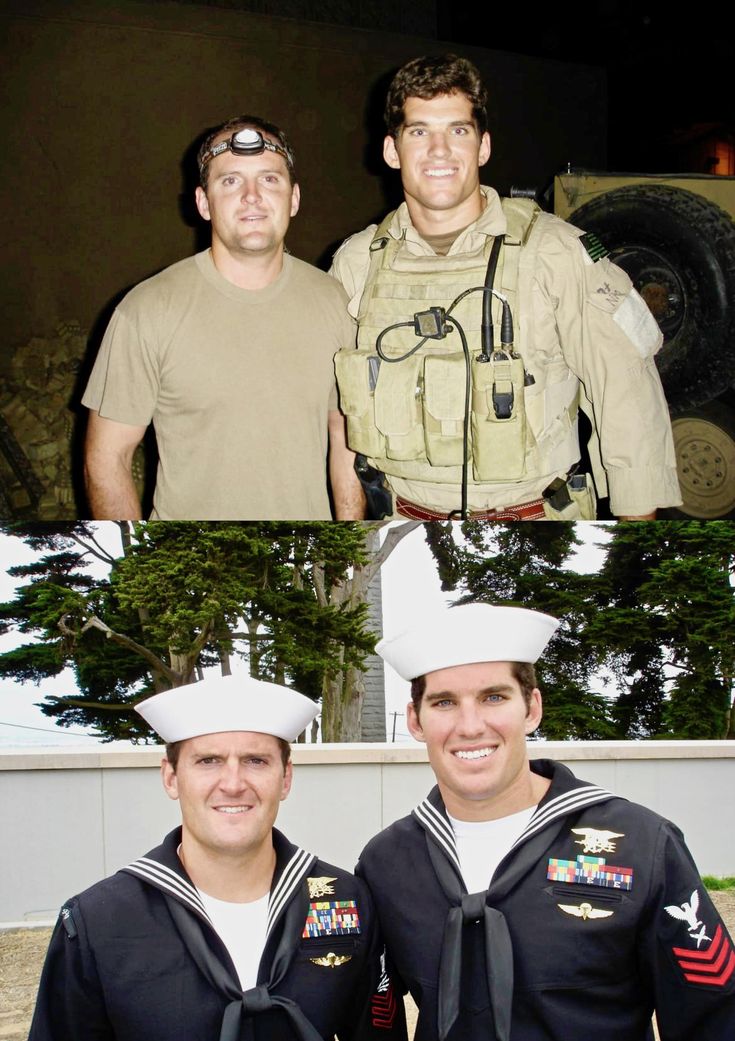
Therefore, the minimum yearly salary for a Navy SEAL is $24,000 though you’ll likely receive far higher earnings.
Most SEALs are ranked higher and therefore earn better pay.
In fact, the average Navy SEAL earns $54,000 per year.
Some special operatives, particularly those with additional skills and serving in dangerous areas, can earn close to six figures a year.
Navy SEALs are the elite division of the U.S. Navy.
Operatives specialize in direct action small-scale warfare, counter-terrorism, combat reconnaissance, and foreign internal defense.
For example, Navy SEALs were responsible for taking down the most wanted man in the world – Osama bin Laden.
Therefore, SEALs get rewarded for serving high risk and dangerous missions.
Specialized training like parachuting and diving also reward SEALs with extra pay for all the training and dangers associated with it.
Keep in mind that Navy SEALs only make up 1% of all Navy personnel (2,450 active-duty operatives).
Consequently, it is not easy to become a SEAL and it only makes sense for operatives to earn more than regular service members of the Navy.
Related Article: 17 Famous Navy SEALs (and 3 Controversial Ones)
There are a ton of added incentives to joining Navy SEALs.
The most obvious is pay bonuses which range from simply completing training to signing back up for another tour.
SEALs also receive the same benefits as other members of the U.S. Navy.
It includes very good health insurance, life insurance, retirement, paid time off, and holidays.
Some of the programs associated with the military are top-notch like tuition reimbursement.
For example, many people join the military primarily as a means to afford higher education for something they want to do after leaving the military.
Soldiers also get other perks like housing, food, and clothing while serving on a military base.
Your retirement pay in the military is based on what you were earning each year prior to leaving.
So, for example, say you were a Navy SEAL making the average yearly salary of $54,000.
Your retirement pay would start at approximately $27,000 per year, yet different factors may influence the final sum.
Navy jobs in Special Operations generally get a higher salary at retirement because of the increased levels of specialized training, skills, and exclusive assignments associated with the job.
Any Navy SEAL is eligible for retirement after serving at least 20 years and getting honorably discharged.
SEALs with 20 years of experience are eligible for 50% of their average base salary.
If you make it to 30 years or more, you can receive up to 75% of your average base pay in yearly increments.
Navy SEAL salary is something that is important to consider not only if you want to join special-ops, but also if you want to secure the highest amount of wages.
SEALs generally receive higher pay (even though compensation is based on the same Navy pay scale) because of added bonuses.
Hazardous Pay, Imminent Danger Pay, and Dive Pay are just a few examples of how you can earn several $100 more each month compared to regular service members of the Navy.
The average Navy SEAL salary is $54,000 per year, and you can earn close to six figures in certain roles and especially dangerous places.
Nicholas A.
Nick Anderson has been serving on Active Duty in the U.S. Navy for the last 10 years. He graduated from Saint Leo University with his B.A. in Accounting and is a graduate student at the University of Louisiana at Lafayette, pursuing an M.B.A. in Finance. Born and raised in Huntsville, Alabama, Nick enlisted in the Navy at the age of 17. During his deployments onboard the USS Fort McHenry, he traveled to 23 countries on four continents, sailing roughly 42,000 nautical miles across 30 seas and five oceans. He currently resides in Meridian, Mississippi.
He currently resides in Meridian, Mississippi.
Latest posts by Nicholas A. (see all)
Affiliate Disclosure: This post may contain affiliate links. If you click and purchase, I may receive a small commission at no extra cost to you. I only recommend products I have personally vetted. Learn more.
By Patrick Gleeson, Ph. D., Updated June 27, 2018
Navy SEALS are paid the same basic salary at each rank as all members of the U.S. Armed Forces. They also receive two substantial bonuses, one upon qualifying for SEALs training, the other upon successful completion of the training program. They are also eligible for substantial retention bonuses as well as several monthly warfare payments that can add hundreds of dollars to their paychecks. But considering the qualification required, the length and intensity of training and the physical hazards of their combat service, you may conclude they're not paid a lot of money.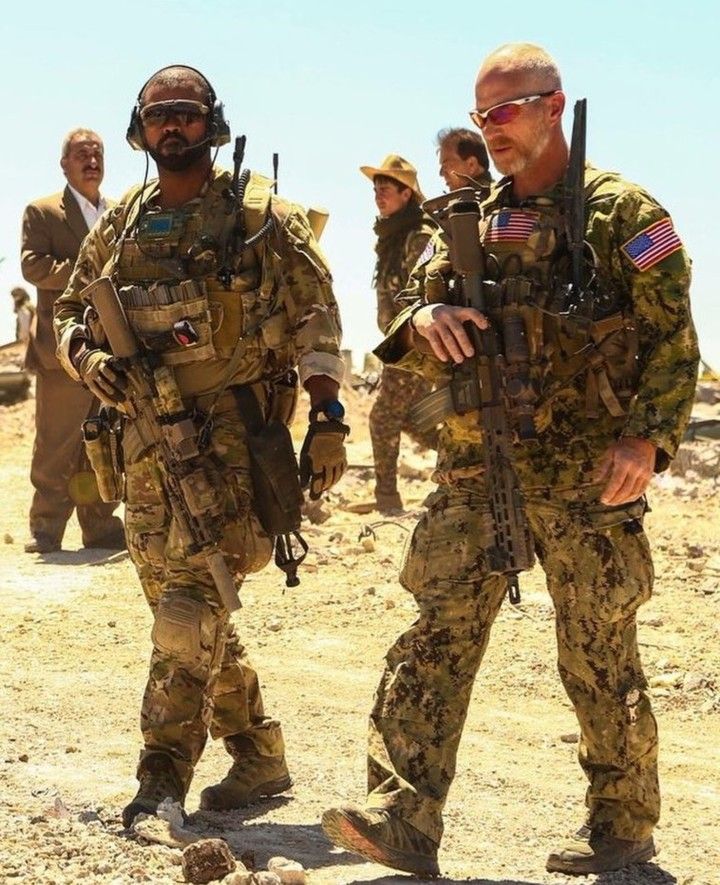
For 2018, enlisted active duty SEALs salaries start at $2,089 a month for a Petty Officer Third Class (E-4) with less than two years service at that grade and rise to $7,845 a month for a Master Chief Petty Office (E-9) with 40 years total service.
For 2018, non-commissioned officer (NCO) SEALS earn basic monthly salaries ranging from $3,379 a month for a Chief Warrant Officer 2 (W-2) with less than two years service at that grade and rise to $9,731 a month with 40 years of total service.
For 2018, active duty SEALS officers in training start as Ensigns, the lowest officer rank (O-1), with a salary of $3,035, but by the completion of training or shortly thereafter will usually have a rank of Lieutenant Junior Grade (O-2), with a monthly salary of $3,497. The highest ranking SEAL in the U.S. Navy (there is only one) is a four-star Admiral (O-10), the Navy's highest rank, who earns $15,583 a month.
Prospective SEALs receive a $12,000 bonus once they qualify for SEAL training, which lasts a year or more, depending on special skills acquired. Upon completion of training, SEALs receive another $40,000 bonus (less than 20 percent of trainees graduate).
Upon completion of training, SEALs receive another $40,000 bonus (less than 20 percent of trainees graduate).
Bonuses, especially reenlistment bonuses, comprise a substantial part of SEALS' extra pay. Reenlistment bonuses range from a minimum of $30,000 to a maximum of $160,000. SEALS with special skills (which most possess) may receive additional retention bonus payments upon reenlistment.
SEALS also receive additional monthly salary increments for a variety of skills and hazardous duty services. These include dive status pay ($150per month), (parachute) jump status ($150-225 per month) and demolition status ($150 per month). The Navy offers many other special bonus payments to SEALS with special skills in various areas, some classified. These payments can add more than $10,000 per year to a Navy SEAL salary
The answer to this question isn't entirely clear. When you consider that most SEALS have advanced fairly far up the ranks, whether enlisted, non-commissioned or commissioned, that most receive hazardous duty pay of one kind or another, and that retention bonuses are generous and can add another $25,000 each year to a SEAL's base pay, you could conclude that, yes, they do make a lot of money.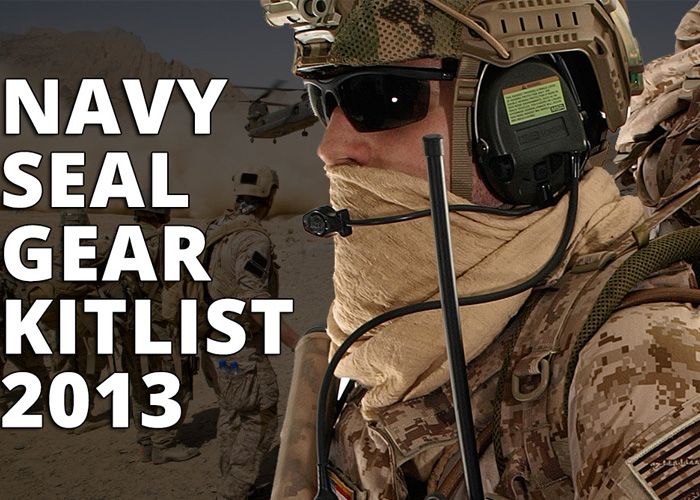
On the other hand, SEAL mortality rates are high regardless of combat service; many SEALS die in training accidents. SEAL duty is not only hazardous but often physically debilitating. Not all career SEALs remain in sufficiently good health to be able to put in their 20 years and get a generous military service retirement.
To put SEALs' pay rates in a different perspective: the highest paid SEAL in the service makes around $230,000 a year after a minimum of 20 years of service. One 2017 Columbia Business School graduate with an MBA had a starting salary of $325,000. A Harvard MBA graduate in the same year managed to start his career with a salary of $500,000. Injury and mortality rates for MBAs aren't tracked but are presumably low.
Well, young people, let's continue. It turned out that readers of the column are by no means against the regular appearance of some of my old memories here. So, I'll give you one more portion to start with. However, at first it will not be about what I remember. Quite the contrary - I will tell you about what was not deposited in my memory. When and who first told me about the extraordinary abilities of dolphins? The devil knows. Most likely, as in many other cases, it was the father. Mom's hospital was at the other end of the city, on the outskirts. My kindergarten, and then my school, is in the center, closer to my father's work. It is not difficult to guess that the head of the family most often escorted the child to the place of his gradual growing up and socialization in the morning. Then I often stuffed myself into his companions even after reaching the age that allowed me to move around the city on my own. And not just me. Turning back, a whole string of children was found close behind us. Everyone pretended that it happened quite by accident, but at the same time carefully listened to our conversation. It used to happen that later at school breaks one of them would come up, clarifying something like: “Is this your dad? .. Is it always like this with you? .. Listen, I missed it, tell me how Joan of Arc ended with the Inquisition? In the pre-Internet era, Anatoly Vasilyevich was something like an Internet search engine for me. Any request was immediately followed by a two-three-minute lecture. If desired, much longer. The topics were very different. Naturally, taking into account boyish interests, and with an emphasis on unusual and entertaining: stories with geography, flying saucers and Egyptian pyramids, tanks and planes, partisans and pirates, knights and astronauts . But the first meaningful memory was imprinted very clearly. It refers to the end of the 70s, when the American film "The Day of the Dolphin" was shown in the Soviet box office.
The most powerful shots of the film are the last ones. ...A hovercraft is rapidly approaching from the sea - the military wants to get their way no matter what. We must be saved! But Tarell wastes precious time repeating the order to the dolphins over and over again: "Go to sea and never come back! Never speak human language! Never!" Only cooing in response to him: "Why?" Then people still run away deep into the island, and the dolphins swim in pairs along the coast and their piercing, calling cry is heard over the sea: “Dad! Mother!" When the lights come on in the hall, many viewers begin to hurriedly, bashfully wipe their wet eyes and sniff their noses on the way to the exit... If there was a desire, now one can watch this film without much difficulty. I recently remembered the “Day of the Dolphin” after the opening of Robert Merle's page . It was his novel The Rational Animal (1967) that served as the basis for that film adaptation. Too bad I didn't get it when I was a kid. It would be possible to search now, but I am tormented by vague doubts that a move will come to reading it. And so the queue lined up rather big and continues to lengthen menacingly. And to say that, I hardly learn anything new. Over the past years, invariably interested in the topic, I learned a lot of interesting things about marine animals in general, and about dolphins in particular. It is interesting that at the same time I did not come across a single popular science book, or at least a decent brochure on this topic. It would seem that the Internet is ready to provide the modern reader with much more information with just one or two requests. But you will be disappointed. The search engine stubbornly gives out the same thing - a scattering of some articles, for the most part, small in volume, superficial and weighed down by the unhealthy craving of journalists for sensationalism. Against this background, the work of journalist Sergei Kalenikin noticeably stands out for the better. One feels that the author has been interested in the topic for a long time, purposefully met with many experts, interviewed them, collected extensive factual material, publications from various print and online sources. After reading it, it becomes obvious that not one or two articles of subsequent years are just a compilation of quotations of various sizes, pulled from Kalenikin. At best, the authors used the same sources. But Kalenikin has more, much more. At the same time, Kalenikin's work only confirms my long-standing conclusions about the reasons why there have not been any notable popular science publications in this area so far. First, what are the 70s and 80s? We still know almost nothing reliably about the oceans. We can say nothing at all. More or less regular and active research in this area has been going on for a little over a hundred years, rarely dropping to a mark of a hundred or two meters. So in the thickness of the waters of the seas and oceans, humanity is waiting for many more secrets and discoveries. This fully applies to dolphins
(From A. Gordon's Dolphin Day program) Secondly, publications on dolphin research have been severely limited for a long time. Just now I was thinking about one of my last games “What? Where? When?" And in the early 2000s, the team, as if not Alexander Druz himself, surprised me when they didn’t “take up” the question: , always turns out…” Even a frank hint did not help: in the photo, the author of the question is standing in a pose a la Rambo with something like a laboratory laser at the ready. Perhaps the "experts" did not read this novel, which is strange - acquaintance with the work of our Kurt Vonnegut seemed to be considered mandatory among the intellectuals of those years. But the phrase has long gone beyond the boundaries of the genre, turning into a stable mem that no one dares to dispute: no matter what the scientist does, it always turns out, weapon . And this fully applies to our case.
These are legends and fantasies. And in the twentieth century, the issue was approached much more thoroughly. Marine animals were put "under arms", but - damn dialectics! - it was during the preparation for their combat use that the lion's share of our modern knowledge about them was obtained. The professional interests of your obedient servant also determine the distinct bias of my knowledge in volume direction. At first, information was collected painstakingly, bit by bit. Mostly by word of mouth. And in recent years, this has become not that easier. I would say that a wave of information fell on the reader - take it, I don’t want it. Which I shamelessly used.
But even I was surprised by Kalenikin. For example, the story about the preparation of war seals by the famous Lev Durov for the Russian fleet during the First World War is already quite well known. But about parallel in time, similar studies in England, and in Sweden - before the start of the Second World War, I have not come across any mention anywhere else. Moreover, this information has not yet been replicated and may well claim exclusivity.
http://fantlab.ru/autor21918 Meanwhile, as I understand it, Kalenikin's education is purely humanitarian and has nothing to do with either zoology or ethology, so his work strongly resembles a patchwork quilt - painstakingly assembled, but swept on a live thread pieces from different sources. The generic seals inherent in the works of many of his colleagues in the workshop are also clearly visible. Strict academic assessments and formulations are now and then interrupted by overly emotional exclamations in the style: “How long!”. But Kalenikin's attempt is worthy of all respect. And to compensate for some of the shortcomings of his work, I am ready to share with you some of my "bins". The part about Soviet dolphins in the Black Sea is quite self-sufficient there - after the collapse of the USSR, Sevastopol went to Ukraine, and they opened access to many materials. So, this side of research is now covered as well as possible. There is much less information on the activities of other Soviet centers for the training of marine animals. Here is what Kalenikin tells about the Far East (by the way, evaluate the rhetoric at the same time):
And here is what we read from him about the North:
Now look at article "Dolphin Special Forces" by a certain Vladimir Shcherbakov ("Around the World" No. 2 (2833) 2010, heading "Arsenal"). Those who wish can compare its text with what was published five years before. But, as I said, let's assume that the authors simply used heavily the same sources. I was personally interested in something else - and phrase 9 migrated here0030 "There is no reliable information about the fate of the unit in the Northern Fleet" . And the claim here is by no means to Kalenikin. In the light of our recent conversation about the fact that the reader can and should trust only "tough professionals in real editorial offices", I bring to your attention one more material from the same "Around the World":
I have long had the impression that if there were professionals in some editorial offices, then it was too once. It turns out that there is quite reliable information. All you need is the desire and the ability to find it - at least leaf through the backing of your own magazine. And if you tear your ass off the chair in the office where you sit, shoveling the net for other people's articles, you can find something else.
Of course, the circulation of publications is scanty. I can boast of owning the last book in this series, and there are only three hundred copies of them. But, I think, MMBI experts would be delighted if Vokrug Sveta showed interest in their work, and provided a lot of interesting facts for publication. Because they have almost nothing secret left for a long time.
And an inquisitive journalist could find more than just Kalenikin's articles online.
Aqua training ground somehow survives to this day, continuing an almost feverish search for sponsors. Only it's all about pinnipeds. And although I could tell a lot more about them, it's time to return to our dolphins. Attached is an article about marine animals in the US Navy in a slightly more academic manner than Kalenikin's. Regarding the unscrupulousness and deceit of the adversary, pay attention to the strict control of environmentalists over the work of the military, a sharp reduction in funding and the declassification of the program in the early 90s. Talk about some extraordinary military secret of the American program has long been on the line of symptoms of the same journalistic disease. In fact, no more than 5% of research remains closed, and these percentages relate mainly to the CIA center in Key West. But those are the guys from Langley. They have, as they say, nobles oblique. Others are incredibly open. Don't believe? You can check. How are things in other countries? To put it mildly, differently. We can talk about some kind of openness only with regard to India. At the end of 2008, official representatives of the Navy of this country announced their intention to use trained dolphins for military purposes, in particular, to undermine enemy surface and underwater targets. The plans drew strong condemnation from national animal rights organizations, who called on the government to abandon the plans. This is actually a very interesting fact, given that India is in constant competition with Pakistan and China. That is, it is possible to assume something similar there. But so far nothing has been heard about it. And here, the Americans do not hesitate to reveal someone else's secret to the whole world. According to the US intelligence services, during the Zulfakar Strike exercise in 2006, under conditions of heightened secrecy, the top military-political leadership of Iran demonstrated the possibility of destroying naval targets using trained dolphins. Among the countries that use dolphins for military purposes, most experts unanimously name France, but this information is not officially confirmed. By and large, the list can be rather big. Any country that has an oceanarium and where trained dolphins perform has a minimum of the necessary equipment and trained personnel to start militarizing marine animals Now there are about three hundred active dolphinariums in the world. Nearly a third of them are in the US. Actually, it was originally planned that somewhere here the article would smoothly “fade away”, reaching its logical conclusion - with a hint of a possible continuation. But it was not there. The turn of that same magic came, a series of amazing coincidences that I mentioned more than once. Events began to "attract" to each other and the continuation appeared somehow by itself. ... went into the next office - we ran out of toner, and I wanted to copy Shcherbakov's article from Vokrug sveta. Alexander Petrovich, our pensioner, got interested, read it. - This Kalganov, "Beard" - was an amazing man. The whole chest is in orders, all in scars - a hero and a daredevil, what to look for. And I was terrified of dentists. If a tooth began to hurt so much that he could not stand it, he tore them to himself. Half a glass of alcohol for anesthesia, threw a loop, - "Crunch!". And another half a cup, for disinfection. — Who told you? - I'm curious. - Heh, I told you. I, my dear, was personally present at the same time when I was doing student practice in this very ve-che. — What kind of practice? - Student. Summer, - my neighbor squints rather like a cat. - When I entered the Sevastopol Instrument-Making Institute, I became friends with one guy. And he was local. The first course ends, the session is on the nose, and the practice is just around the corner. We were then sent to distant collective farms - they built cowsheds, pigsties, all sorts of farms. And a friend says to me: “There is an option to stay here for the whole summer. — And you didn't ask questions? - Asked, of course, but carefully. We let in the fog, and he retreated. So, every summer we practiced there. Then we were issued with permanent passes - they could pass freely at any time, not only in the summer ... It was also interesting when classes began at the military department. They began to issue all access to secrets - fill out questionnaires, write autobiographies, all sorts of certificates - a bunch of pieces of paper. Well, you know. And we brought them the number of times from the part of the certificate in the form. ...Of course, the laboratory assistant's memories of the course and results of the work cannot be compared with what is described by Kalenikin. But they add life. And, you see, an interesting coincidence. But it did not end there, and then it went much closer to the present. ...a friend showed up to me - he came on a business trip from the Far East. Word for word, I mentioned in passing about dolphinologists who emigrated from Ukraine to Iran. — Ha, surprised. Yes, in this case for a long time "Trend, however." After our center was dispersed, many "specialists" were quickly bought by the Chinese. And the contracts are “delicious” - they have been sitting there for many years and for some reason they are not in a hurry to go back. As it is - the Far East version of the Ukrainian-Iranian deal... …we are having a glass of tea with a familiar sea dog. “Yes, these fighting dolphins have long been around the world - like uncut dogs,” my counterpart declares emotionally. — Is it like that all over the world? — Well, maybe not everywhere, but in Israel they definitely are. - I haven't heard anything about it yet. — Well, I'll tell you. It's been five years since this thing started. If you stand in the road before entering the Israeli port, from time to time an interesting boat comes to the parking lot. The awning is stretched over the deck, and in the side it has a cutout almost to the very waterline - you must admit, any sailor will pay such attention to this. This boat spins around all the time, but does not come close. But along the sides of the ships, dolphins begin to snoop. Then the boat goes more seaward, further away, and the course stops. But the optics have a good magnification, sometimes you can see how something jumps out of the water onto the deck - exactly through that cutout in the skin. And when we go to the port, the dolphins accompany us, and the boat is nearby. Yes, and in the port, it happens. At the same time, they are constantly reminded that swimming from the ship is prohibited. So be smart… Be smart… It makes me want to check it out. Let's get together. Do you want us to explore with you? Stop! Where? No need to paint camouflage spots and stripes on the face with combat cosmetics. No need to stick twigs in your hair or wrap yourself in a sheet if you still have snow. All this is superfluous. And now you won't have to go to the other end of the world. We will go into reconnaissance without looking up from the screen and without leaving the Web. Right, oh, right Pavel Shumil:
Here, of course, too much. Anyone can call Google Earth a harmless program, but not specialists of a certain profile. But this weapon is double-edged. Public availability allows it to be used by both one and the other side. Why would Americans and Israelis regularly complain that Palestinian terrorists and guerrillas in Iraq are using high-resolution Google maps to prepare their actions? Well, you can't say otherwise - we were born to make a fairy tale come true. I propose to visit the descendants of King David. No, of course, those who wish can check the Gauls, Persians, and subjects of the Celestial Empire for military-dolphin secrets. Only troublesome it is - along their entire coast to scour, all the bays and harbors to ransack. Yes, and you can be completely deceived - both in France and in China there are enough commercial oceanariums. And what about that Israel? Ugh! Plus, the coastline is not indented, almost all ports are hidden behind artificial breakwaters and breakwaters on a bare beach. They have one dolphinarium, and that one is on the shores of the Red Sea, while we are still more interested in the Mediterranean coast. View everything there - ten to fifteen minutes. Pictures from the heat of the heat - fresh - 2011. Go? And so, very quickly, but still - all of a sudden - in the southern part of the port of Hadera, we come across some interesting objects. What are those little squares along the piers? One, two, three, four... Fifteen. And two more, a little further from the coast.
Comparing these images with a photograph of the American military dolphinarium in San Diego, do we see a surprising similarity? It seems that we found nothing more than dolphin enclosures. Actually, that's all intelligence. Move back, I'll cover... Drop it, commander, drop it. And according to the results, I propose, without delay, to become newsmakers and submit a sensational statement to the judgment of the general international community. Something like that:
Exclusive, gentlemen. And, as seasoned copywriters teach us, we warn you: when reprinting this message, as well as any part of it, a link to the source is required. Of course, our former fellow countrymen (an mass) can call us Bad Boys, who revealed the real military secret to the damned bourgeois Palestinians. But, firstly, we are not from evil. Secondly, now they will only be more afraid. And thirdly, you need to warn! About the fact that this is a secret, in general, no one bothered to tell us. And finally, who in their right mind and sober memory will take seriously the statement made by Captain Vrungel and posted under the heading "Fairy Tale ..." on the site "Laboratory of Science Fiction"? Eh, the article should have been published on April 1st. It's just too long to wait, it's unbearable... ALL PHOTOS Employee of the main tactical unit of the special operations forces The US Navy, which on the night of May 2, 2011 eliminated Osama bin Laden , does not receive pension payments and medical care. About the history of this man, according to "Interfax" , writes the magazine Esquire . "The shooter was sweating, talking about his obscure future and plans to leave the special forces," the magazine writes. According to journalists, at present, the fur seal is only thinking about how to feed his family and pay for the health insurance of his wife and children. Unlike U.S. Special Forces veteran Matt Bissonnett, who wrote book "A Hard Day" about the destruction of "terrorist number one", others SEALs are in no hurry to do the same or perform in public, as they may violate the internal rules of the elite unit, writes a magazine. According to Esquire, SEAL commanders ordered that those involved in the operation to eliminate bin Laden 23 special forces did not spread in the media about its conduct and behaved as if nothing had happened. The US authorities have promised to pay a reward of $25 million for the destruction of bin Laden, however, most likely, no one will receive it - neither commandos, nor the intelligence experts who helped them conduct this operation, writes a journal. "I'm not a religious person, but I always felt that I appeared on earth in order to do something special. After that operation, I understood why," he said in an interview with the magazine. "This operation has become commercial, people use it for their own benefit. But not the killer (terrorist). While others make money, he behaves carefully and only cares about not disgracing anyone," notes Esquire. "The body of the commando who killed bin Laden is covered with scars, his eyes are damaged, he suffers from arthritis and tendinitis. retired for several years in the special forces "fur seal" did not receive from the authorities nothing: no pension, no medical care, no guarantees of protection for himself and members of his family," writes the magazine. Meanwhile, the former wife of the "fur seal" admitted that now in feel more threatened by a possible terrorist attack as an act of revenge than eight years ago. |